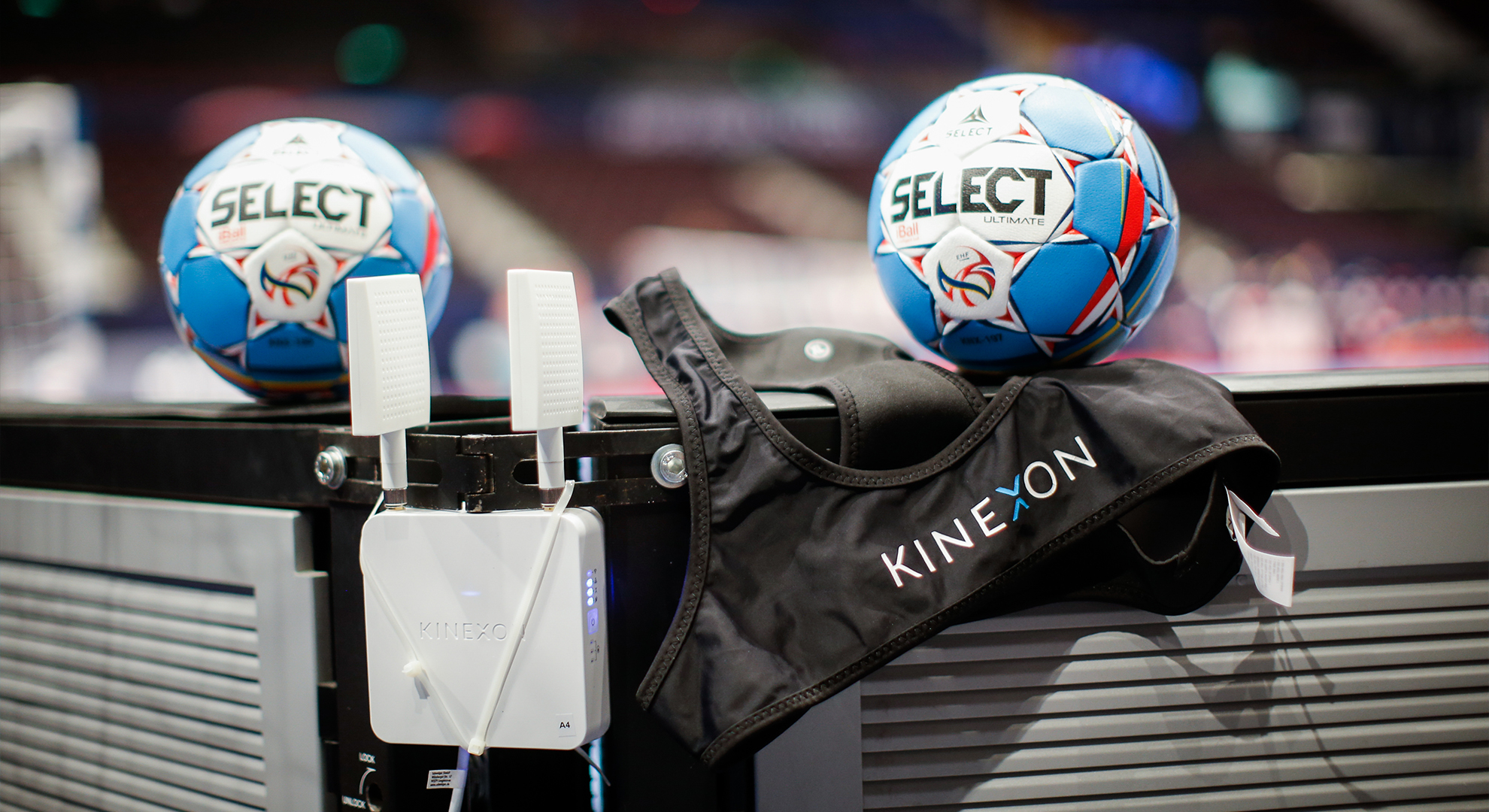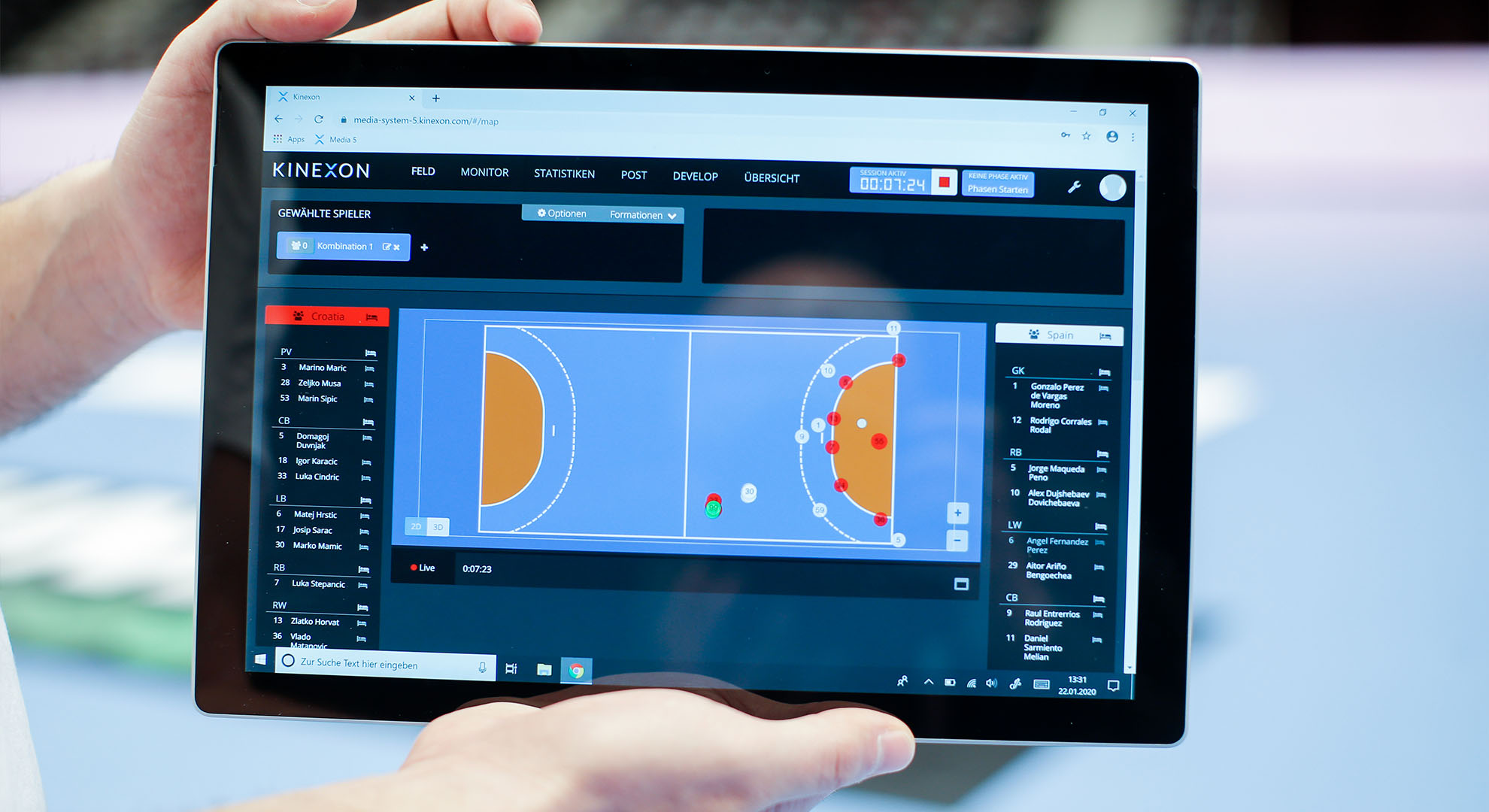KINEXON technology
The use of player tracking technology at the Men’s EHF EURO 2020 in Sweden, Austria and Norway has gained added value.
In the project – part of the long-term cooperation between data technology specialists KINEXON and the European Handball Federation that was extended to 2024 – iBall sensors and sensors in players’ jerseys tracked and registered every move, providing real-time information on individual performances.
It was the first time that player tracking technology was implemented at a major national team event in handball, after the system was used at the VELUX EHF FINAL4 seven months earlier.
entific analysis went on to take the project further. The EHF Methods Commission appointed a team consisting of EHF Competition Commission member Carmen Manchado from the University of Alicante, EHF Methods Commission member Marta Bon from the University of Ljubljana and Petra Platen from the University of Bochum to analyse the raw data gathered at the EHF EURO.
The scientifically valid results from this analysis, first presented by Manchado at the EHF Conference for Secretaries General in September 2020, could help the teams involved to develop new strategies, effective methods and specific programmes in their training.
The raw data interpreted by Manchado and her team included the covered distances, velocities, accelerations, changes of direction, impacts and jumps. Combining these elements with metabolic power – a measure of the amount of energy needed during physical activity – a player profile for each position will be determined.

The scientific analysis includes roughly 7.15 million data points from all 65 matches at the EHF EURO 2020, with specific analysis applied to distances covered in both offence and defence.
In the future, more position-specific analysis would enable the comparison of, for instance, offence and defence, winning and losing teams, or preliminary round and final matches.
Additionally, the energy demand of handball-specific moves, like jumping, throwing, blocking, dribbling and blocking, could be determined, which would then further enhance training optimisation.
A similar analysis has been undertaken by Manchado and her team using the data gathered at the VELUX EHF FINAL4 in 2019, with the results being published in the International Journal of Environmental Research and Public Health.
In the future the EHF wants to develop a device to help coaches use the real-time data during games.
